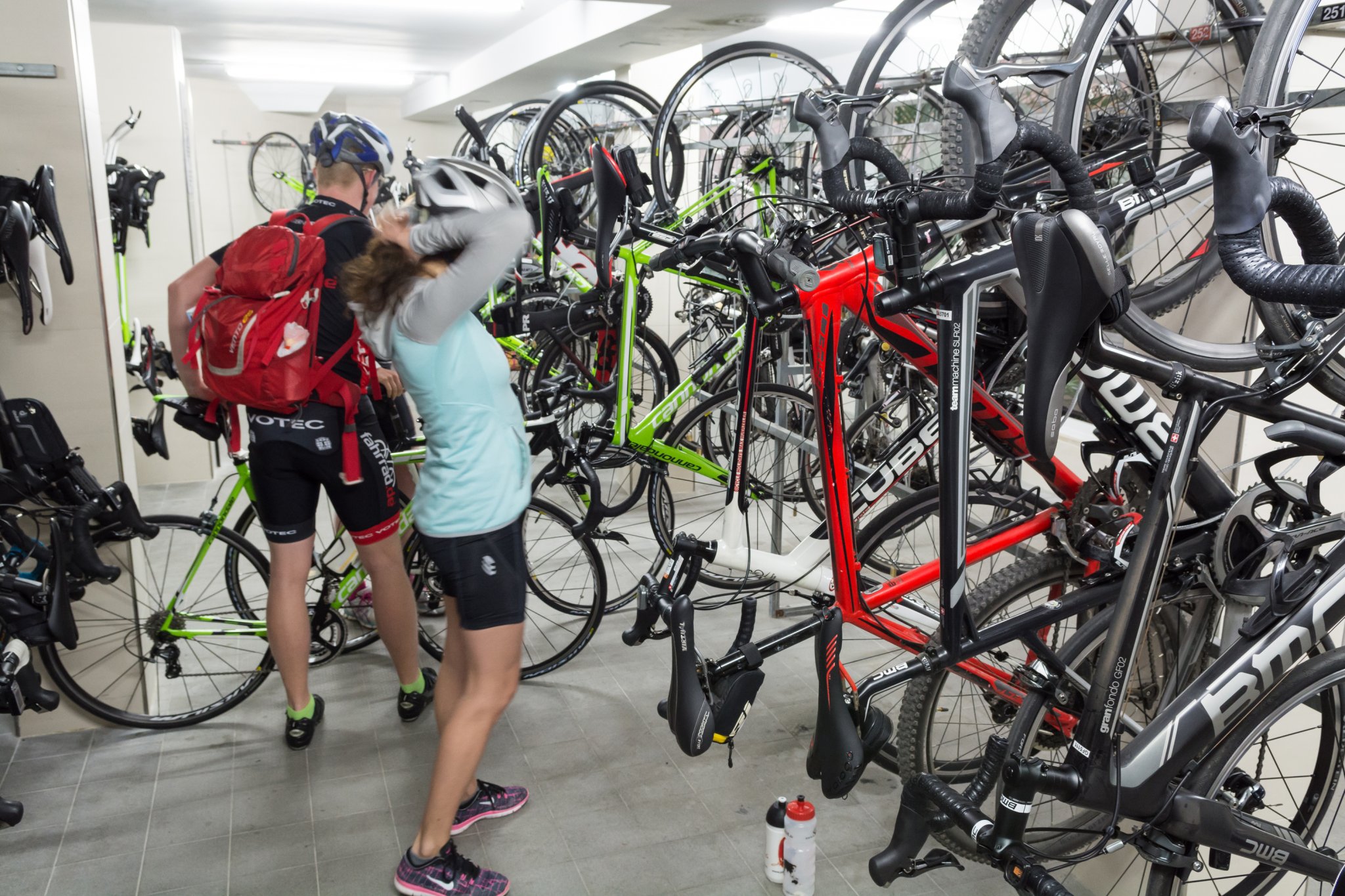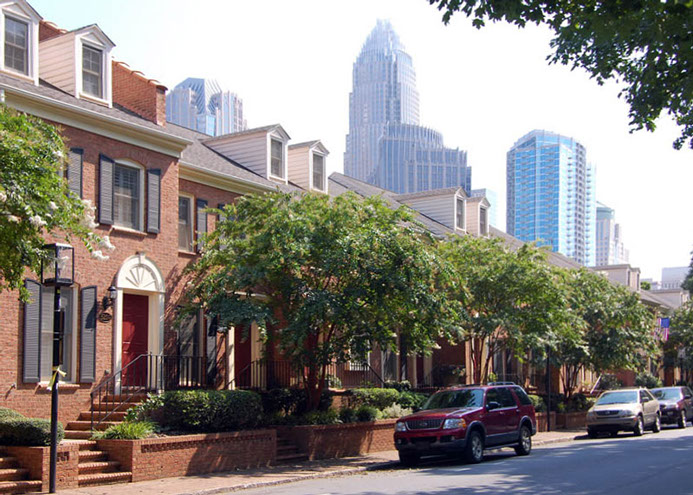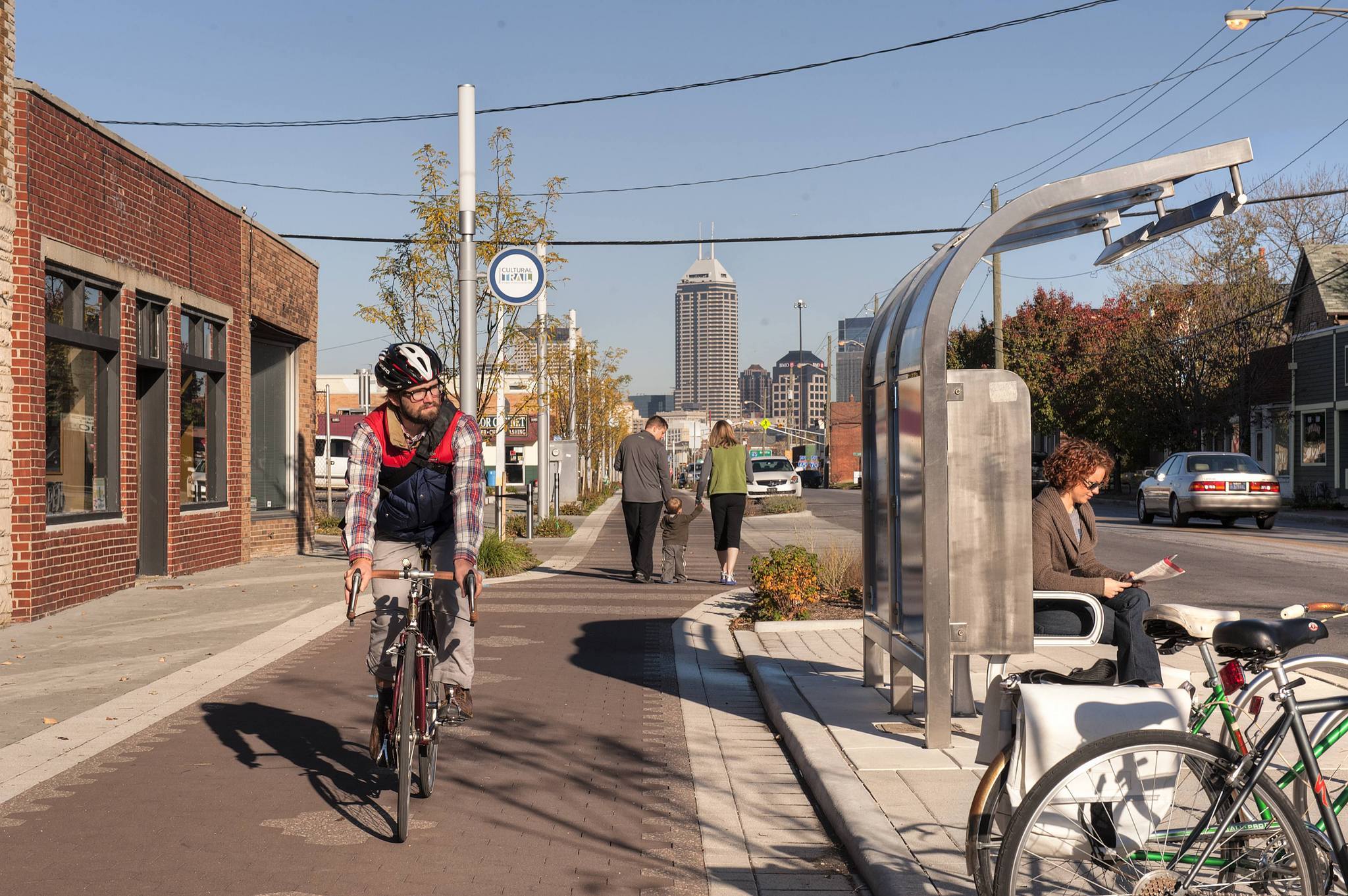Urban Centers
Water Resources and Equity
San Antonians need and deserve walkable, mixed-use destinations outside of the regional centers. Urban centers will provide these opportunities and in certain instances, can serve as the nucleus of a future regional center.
These urban centers are compact and walkable, and can help to fill the gaps between regional centers. The common elements of a successful urban center are a central node of activity, a mix of opportunities to live, work and play, good transit access and strong multimodal connections to surrounding neighborhoods. These areas will attract new residents and serve existing nearby neighborhoods.
MIXED-USE LAND PATTERNS AND TRANSITIONS
Existing and future urban centers should contain a mix of uses and provide a combination of daily goods and services, as well as restaurants and some element of destination retail. Housing and offices are desirable but not required components of an urban center—the neighborhoods surrounding the center can provide the necessary population to support the center from a market perspective. With that said, the most vibrant urban centers will include housing and a larger employment component to support increased development density, a larger critical mass of shopping and dining, shared parking opportunities and stronger potential for activating the center during multiple times of the day and days of the week. Regardless of the overall land use mix, an activating node of some sort is at the heart of every urban center. The activating node can vary, but will typically include a transit station, institutional anchor and/or a clustering of shops and restaurants.
While urban centers should be targeted for higher- intensity development, the height and massing of structures in the urban center should decrease as they approach existing single-family neighborhoods. Destination retail and uses generating a significant amount of traffic should be focused at least two to three blocks from single-family homes wherever possible. Attached single-family and multifamily development can create a desirable transition from higher-intensity urban center uses out to surrounding traditional neighborhoods.
Water Resources and Equity
TRANSIT-SUPPORTIVE DEVELOPMENT
A strong transit system is a major pillar of the vision for San Antonio in the coming years. But, it isn’t enough to say that we need more transit and better access to transit. We have to plan for it and make it happen. Transit systems function best when they are well integrated with and supported by local land use and community design decisions. Supporting transit requires looking at how streets and roads are built and the mix of land uses around them, making it easy for people to access transit and making sure people have reasons to ride transit.
Urban centers provide the greatest opportunity for transit-supportive development outside of regional centers. Compact, higher-density development patterns shorten the distance people must travel to reach their destinations and supply the ridership that can support more frequent transit service and a greater variety of routes. In turn, higher service levels in these areas attract more riders and support the local land use vision. This self-perpetuating nature of urban centers is a large reason for their vibrancy and why they tend to attract private development.
NEIGHBORHOOD CONNECTIVITY
While not all urban centers include a strong residential element, they must always provide safe and comfortable connections and transitions to the surrounding residential neighborhoods. Urban centers provide amenities or additional options for nearby residents. Safe on-street and off-street walking and biking connections link the core of urban centers to surrounding residential areas and decrease the impacts of traffic on surrounding neighborhoods. Decreasing automobile use in urban centers is intimately related to the availability and cost of parking. Parking can have a significant impact on peoples’ decision to drive, walk, bike or use transit. The less land devoted to parking, the more space that is available for other uses. This puts more destinations within walking distance, creates a more comfortable pedestrian experience, and helps an area reach a development intensity that supports public transportation and spurs additional development. Additionally, reduced parking requirements can lower the cost of new development, making housing and commercial rent more affordable. The city should explore neighborhood parking permit programs as part of a larger management strategy for urban centers and adjacent neighborhoods.


